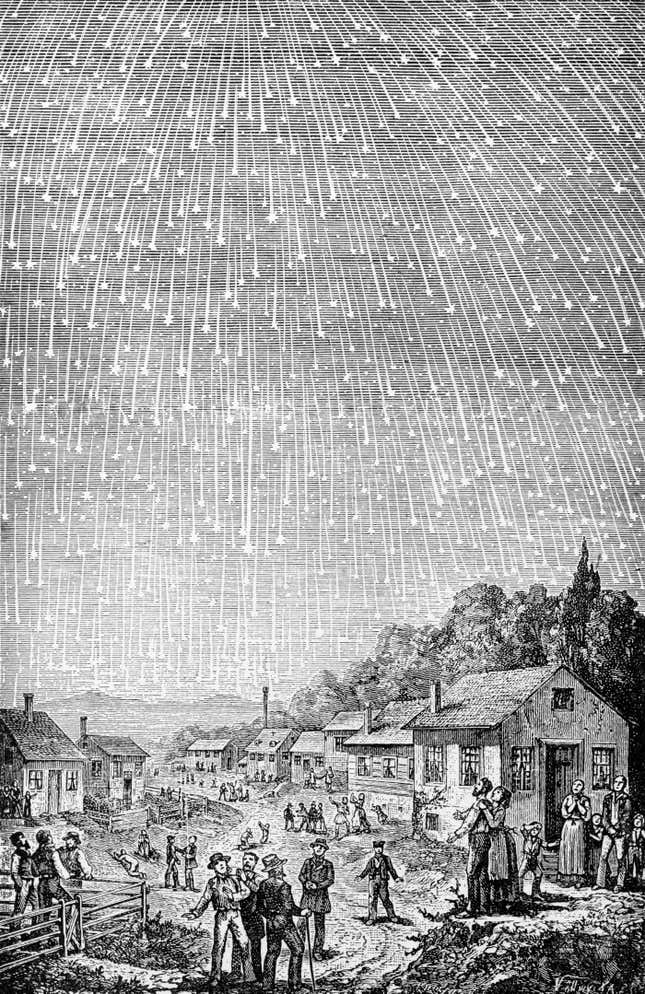Every November, there’s a fantastic event for bringing people together: that’s right, the Leonid meteor shower. It will peak in the night sky this weekend, and this is how you can optimize your view of the show.
The Leonids’ light trails appear to come from the constellation Leo, hence their name, but the meteors actually appear across the night sky. The meteors come from the relatively small comet 55P/Tempel-Tuttle, discovered by Tempel and Tuttle in 1865 and 1866, respectively. The comet’s nucleus is just 2.24 miles (3.6 kilometers) across, and it orbits the Sun once every 33 years.
Advertisement
Though the Leonids are active for about a month—from November 3 to December 2, this year—their peak is typically in mid-November. This year, the peak is expected to occur just past midnight on November 18. The moon is a waxing crescent and will set just past 8:00 p.m. ET, so it will not hinder observers’ views of the shower.
Advertisement

Advertisement
The show can consist of about 15 meteors per hour at its slowest, but their rate can be more frequent. Roughly every 33 years—the comet’s orbital period, if you’re paying attention—the Leonid shower becomes a storm, with hundreds to thousands of meteors visible to the keen-eyed observer.
The last Leonid meteor storm was in 2002, so don’t expect another storm for at least another decade. According to ESA, the most memorable Leonid storm occurred in 1833, when “tens of thousands” of meteors appeared over North America.
Advertisement
Leonid meteors have a velocity of about 44 miles per second, according to NASA. Their trails can be bluish or green, and can leave vapor trails in the sky that last minutes.
According to NASA, the Leonids are best viewed after midnight, in a dark area far from ‘skyglow’ and other light pollution that can make faint objects in space nigh impossible to see. It’s best to look away from the radiant—the point from which the meteors appear to originate—to view them, due to foreshortening (a visual effect that makes objects appear shorter than they are when viewed from certain angles).
Advertisement
The Leonid shower will last until dawn, so you’ll have several hours to catch a glimpse of the meteors. Leonid meteors can be fireballs—bright, longer-lasting flashes of color in the sky—and Earth-grazers, or streaks of light with long tails that appear closer to the horizon. So keep your eyes peeled for both kinds, and cross your fingers for a colorful show.
More: Mysterious Near-Earth Asteroid Phaethon Just Got Even Weirder
Services Marketplace – Listings, Bookings & Reviews